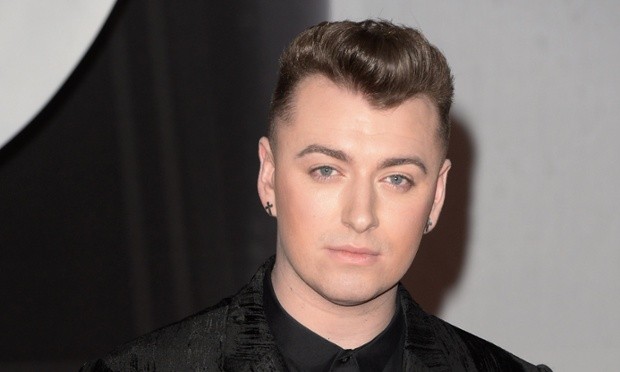Sam Smith Cancels Trip Down Under Due to Vocal Cord Injury

Grammy Award winning singer/songwriter Sam Smith has been forced to cancel his Australian tour because of voice issues. He sent this message to fans on Instagram:
But, as he correctly sings, “You Know I’m not the only One,” Smith is just one of a long line of singers and actors who have had vocal cord issues. Others include Adele, Celine Dion, John Mayer, Steven Tyler, Jon Hamm,and American Idol contestants Lauren Alaina and Caleb Johnson.
What are the vocal cords?
 The vocal cords are two folds of smooth muscle within the voice box (larynx). The larynx lies at the top of the windpipe (trachea), just below the back of the tongue. Air passing through the vocal cords causes them to vibrate, and produce the sound of your voice.
The vocal cords are two folds of smooth muscle within the voice box (larynx). The larynx lies at the top of the windpipe (trachea), just below the back of the tongue. Air passing through the vocal cords causes them to vibrate, and produce the sound of your voice.
How is the voice produced?
Voice is produced by vibration of the vocal folds. The vocal folds are two bands of smooth muscle tissue that lie opposite each other. They are located in the larynx or voice box. The larynx is positioned between the base of the tongue and the top of the trachea (windpipe), the passageway to the lungs.
When at rest, the vocal folds are open to allow an individual to breathe. To produce voice, the brain precisely coordinates a series of events. First, the folds come together in a firm but relaxed way. Once the folds are closed, air from the lungs passes through them, causing vibration and thus making sound. The sound from this vibration then travels through the throat, nose, and mouth (resonating cavities). The size and shape of these cavities, along with the size and shape of the vocal folds, help to determine voice quality.
Variety within an individual voice is the result of lengthening or shortening, tensing or relaxing the vocal folds. Moving the cartilages, or soft, flexible bone-like tissues to which the folds are attached, makes these adjustments possible. For example, shortening and relaxing the vocal folds makes a deep voice; lengthening and tensing them produces a high-pitched voice.
What is Vocal Abuse?
Vocal abuse is any behavior or occurrence that strains or injures the vocal folds (or vocal cords). This may include excessive talking, throat clearing, coughing, inhaling irritants, smoking, screaming, or yelling. Vocal misuse is improper voice usage such as speaking too loudly or at an abnormally high or low pitch. Frequent vocal abuse and misuse can damage the vocal folds and cause temporary or permanent changes in vocal function, voice quality, and possible loss of voice.
Who may be at risk for a disorder of vocal abuse or misuse?
Disorders of vocal abuse and misuse are the most prevalent and preventable of the types of voice disorders. Anyone, from infants to the elderly, who uses his or her voice excessively may develop a disorder related to vocal abuse. Lawyers, teachers, clergy, cheerleaders, and professional voice users such as singers and actors often develop these types of voice disorders. Much of the chronic hoarseness experienced by children is caused by vocal abuse or misuse.
What are some of the disorders of vocal abuse and misuse?
The most common disorders resulting from vocal abuse and misuse are laryngitis, vocal nodules, vocal polyps, and contact ulcers. Health professionals who have training in voice and voice disorders often refer to these conditions as “hyperfunctional voice disorders.”
How are disorders of vocal abuse and misuse treated?
Most disorders of vocal abuse and misuse are reversible. The best treatment is to identify and eliminate the vocal behavior that created the voice disorder. In many cases, a brief period of voice therapy is helpful so that the individual can learn good vocal techniques such as proper breath support for speech or eliminating forceful voicing.
What is a vocal cord hemorrhage?
According to the American Academy of Otolargology-Head and Neck Surgery, a vocal cord hemorrhage results when one of the blood vessels on the surface of the vocal cord ruptures and the soft tissues of the vocal cord fill with blood.
Hemorrhage is usually the result of vocal trauma. Vocal abuse or misuse, such as excessive use of the voice when singing, talking, smoking, coughing, yelling, or inhaling irritants can cause damage to the tiny blood vessels of the vocal cords. These may rupture and bleed. Blood vessels that are more fragile than normal, such as those swollen by laryngitis, may also be more prone to bleed.
The main symptoms of vocal hemorrhage are hoarseness and loss of voice occurring over a fairly brief time period. This is not painful, and does not cause any difficulty with swallowing or breathing.
How is vocal cord hemorrhage treated?
Vocal cord hemorrhage is considered a vocal emergency and is treated with absolute voice rest until the hemorrhage resolves.



























0 comments